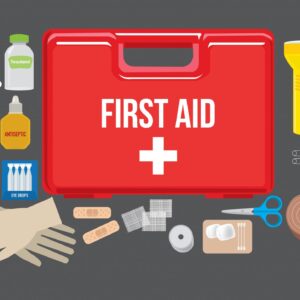Creating a safe work environment is essential in any industry—from construction sites and manufacturing plants to warehouses and office settings. One of the most effective yet often overlooked safety tools is the barricade. However, not all barricades are created equal. Choosing the right barricade for your workplace can significantly improve safety, reduce accidents, and ensure compliance with occupational safety standards.
In this blog, we’ll guide you through the key factors to consider when selecting a barricade and help you choose the right type for your specific workplace hazards.
Why the Right Barricade Matters
Using the wrong type of barricade—or placing it incorrectly—can lead to confusion, non-compliance, and even serious injuries. The right barricade:
-
Effectively communicates danger
-
Prevents unauthorized access
-
Guides pedestrian and vehicle traffic
-
Complies with OSHA and industry regulations
Whether you’re securing an area with falling hazards, chemical spills, or heavy machinery, choosing the correct barricade is essential to workplace safety.
Types of Workplace Barricades
Here’s a breakdown of common barricade types and where they’re best used:
1. Warning Tape (Caution or Barricade Tape)
-
Best For: Low-risk areas or temporary hazards
-
Use Cases: Cleaning zones, minor maintenance, slip hazards
-
Benefits: Cost-effective, easy to install and remove
2. Safety Cones
-
Best For: Temporary pedestrian or traffic redirection
-
Use Cases: Wet floors, warehouse aisle closures, light repairs
-
Benefits: Portable, high-visibility, stackable
3. A-Frame Barricades
-
Best For: Construction or roadway work zones
-
Use Cases: Blocking entrances, directing foot or vehicle traffic
-
Benefits: Sturdy and highly visible, can be combined with signage
4. Expandable or Retractable Barriers
-
Best For: Controlling access to indoor or high-traffic areas
-
Use Cases: Loading docks, hallways, machinery maintenance zones
-
Benefits: Adjustable width, easy to deploy and store
5. Hard Plastic or Metal Barriers
-
Best For: High-risk zones requiring strong access control
-
Use Cases: Fall protection, high-voltage areas, heavy equipment zones
-
Benefits: Durable, reusable, high-impact resistance
6. Jersey Barriers (Concrete or Water-Filled)
-
Best For: Vehicle traffic control or high-security perimeters
-
Use Cases: Parking lots, construction site perimeters, crowd control
-
Benefits: Extremely sturdy, long-term deployment
Factors to Consider When Choosing a Barricade
Selecting the right barricade depends on several factors:
1. Level of Hazard
-
Evaluate whether the area presents a low, moderate, or high risk.
-
Use warning tape for low-risk areas and hard barriers for high-risk zones.
2. Duration of the Hazard
-
Short-term hazards can be managed with portable or temporary barricades.
-
Long-term hazards may require more permanent, durable solutions.
3. Location (Indoor vs. Outdoor)
-
Outdoor barriers should be weather-resistant and high-visibility.
-
Indoor barriers should be easy to move, compact, and non-damaging to floors.
4. Type of Traffic
-
Determine if the area sees pedestrian traffic, vehicle traffic, or both.
-
Heavier traffic areas require sturdier barricades with reflectors or signage.
5. Regulatory Requirements
-
Ensure compliance with OSHA, ANSI, or local health and safety codes.
-
Certain hazards (e.g., electrical or confined spaces) may require specific barricade types and signage.
Tips for Effective Barricade Use
-
Use signage with clear warnings (e.g., “Do Not Enter”, “Danger”, “Maintenance in Progress”).
-
Train employees on the meaning of different barricade types and their importance.
-
Inspect regularly to ensure barricades are undamaged, properly placed, and still effective.
-
Remove or reposition barricades when hazards are resolved to avoid confusion.
Final Thoughts
Selecting the right barricade isn’t just about following rules—it’s about protecting lives. With so many types and configurations available, it’s crucial to evaluate your specific workplace hazards and choose a barricade solution that matches the risk level, duration, and environment.














